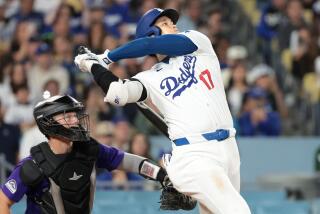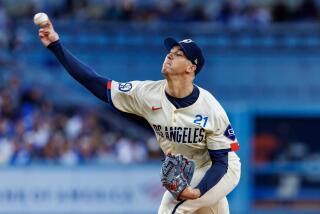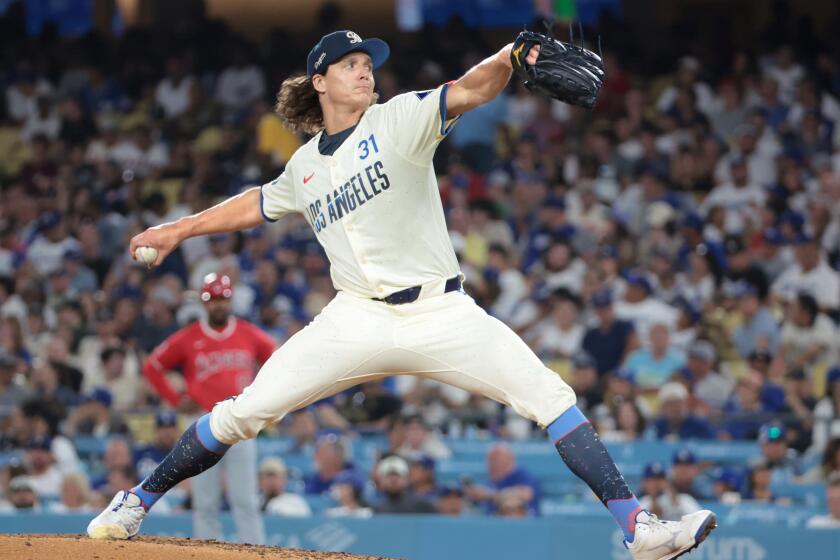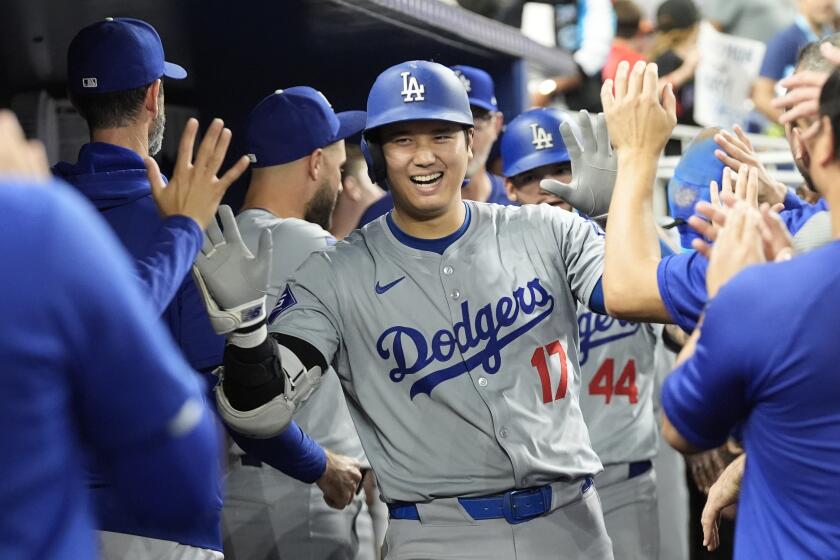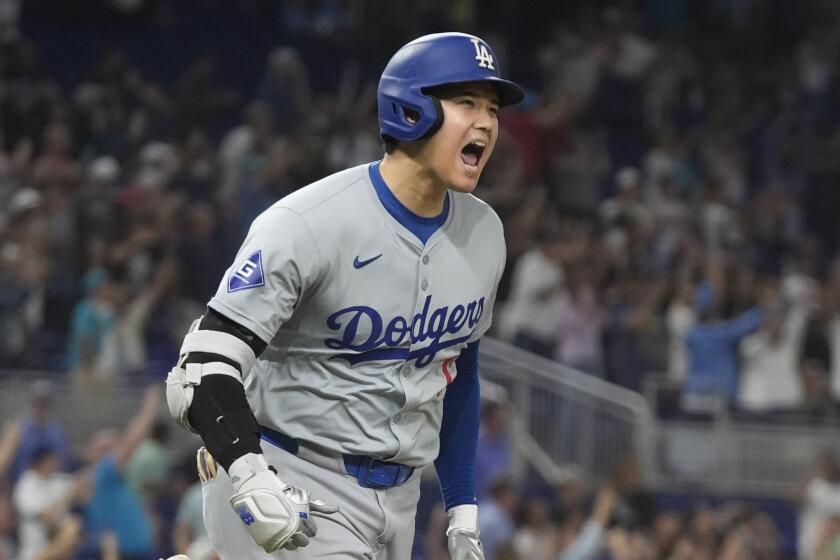Dodgers’ Clayton Kershaw and Chad Billingsley have more in their arsenal
Clayton Kershaw will be able to throw a pitch he couldn’t throw a year ago when he takes the mound in the Dodgers’ home opener Tuesday. The same will be true of Chad Billingsley when he pitches the day after.
“It’s a huge pitch for him,” Manager Joe Torre said of what the slider means for the 22-year-old Kershaw.
“It’s going to be a pitch that’s going to be an out pitch for him,” catcher Brad Ausmus said of what the changeup could mean for the 25-year-old Billingsley.
Both were unexpected additions, one more so than the other.
Kershaw said the slider was something he used to throw casually while playing catch before games. Only when pitching coach Rick Honeycutt talked to him about adding to his two-pitch arsenal that consisted of an overpowering fastball and waterfall curveball did Kershaw start to ponder throwing it in games.
Billingsley said that his changeup was a project more than a couple of years in the making. He threw it in the off-season, he threw it in spring training and he threw it during in-season workout sessions. But it wasn’t until he had a conversation with Ausmus that he considered expanding his already vast repertoire that included a fastball, cutter, slider and curveball.
“I never had the confidence to throw it,” Billingsley said. “I had never really thrown it. I didn’t know when to throw it.”
Reluctance was replaced by anticipation late last season, when he threw the pitch to Ausmus in a bullpen session and was told by the veteran backup catcher of its devastating potential.
“It was what I call a power change,” Ausmus said. “It’s not necessarily the velocity difference that’s going to make it so good. It’s going to come out harder than the typical change, but the fade and the late movement to it made it, to me, a swing-and-miss type pitch.”
Ausmus said he told Billingsley what he thought.
“In two years, I’m going to come watch you pitch and that’s going to be your best off-speed pitch,” Ausmus recalled telling him.
So this spring, Billingsley worked with Ausmus.
With Russell Martin sidelined because of a strained groin, an increased volume of catching duties in the exhibition season fell to Ausmus, a 17-year veteran.
Following Ausmus’ lead, Billingsley gradually learned when he could and couldn’t throw the pitch.
Billingsley said he believes that the growing effectiveness of the pitch helped him post a 1.84 earned-run average in the Cactus League. Ausmus caught Billingsley in his first regular-season start and estimated that he threw it five or six times as he held the Pittsburgh Pirates to one run over 5 1/3 innings.
The pitch can still be improved.
“He has to learn to repeat it,” Ausmus said. “There are times he throws that exact same pitch and it’s that power change that could be a devastating-type pitch. There are other times when he’s kind of feeling for it more and not repeating his delivery on it.”
What Ausmus was to Billingsley, Honeycutt was to Kershaw.
Concerned that Kershaw’s high pitch counts prevented him from going deeper into games, Honeycutt urged him in the middle of last season to develop the pitch that he sometimes playfully threw to teammates along the base lines.
The rationale was that by learning how to throw something other than his fastball for strikes, Kershaw would face fewer unfavorable counts, which would, in turn, allow him to preserve his arm for the later innings.
While Kershaw’s 12-to-6 curveball might be his signature pitch, it has one significant shortcoming: Because the break is so extreme, it often drops out of the strike zone, meaning that if there’s no swing, there’s probably no strike.
Honeycutt made small adjustments to the way Kershaw gripped his slider, and, in bullpen sessions, helped the young pitcher with his mechanics. By the time the Dodgers visited the New York Mets in July, Kershaw had the confidence to throw the pitch a couple of times.
His comfort with the pitch continued to increase.
In Torre’s eyes, the slider was the single most important factor in Kershaw’s late-season dominance. The left-hander posted a 2.56 ERA over his last 10 starts.
“It definitely gave the hitters something else to think about,” Kershaw said.
But Kershaw said he doesn’t consider his slider a completed product. Depending on the day, Kershaw said, the velocity and break of his slider vary.
“Sometimes, it’s harder,” he said. “Sometimes, it’s slower with a bigger break.”
The part that bothers him: “It’s not on purpose,” he said.
twitter.com/dylanohernandez
More to Read
Are you a true-blue fan?
Get our Dodgers Dugout newsletter for insights, news and much more.
You may occasionally receive promotional content from the Los Angeles Times.
